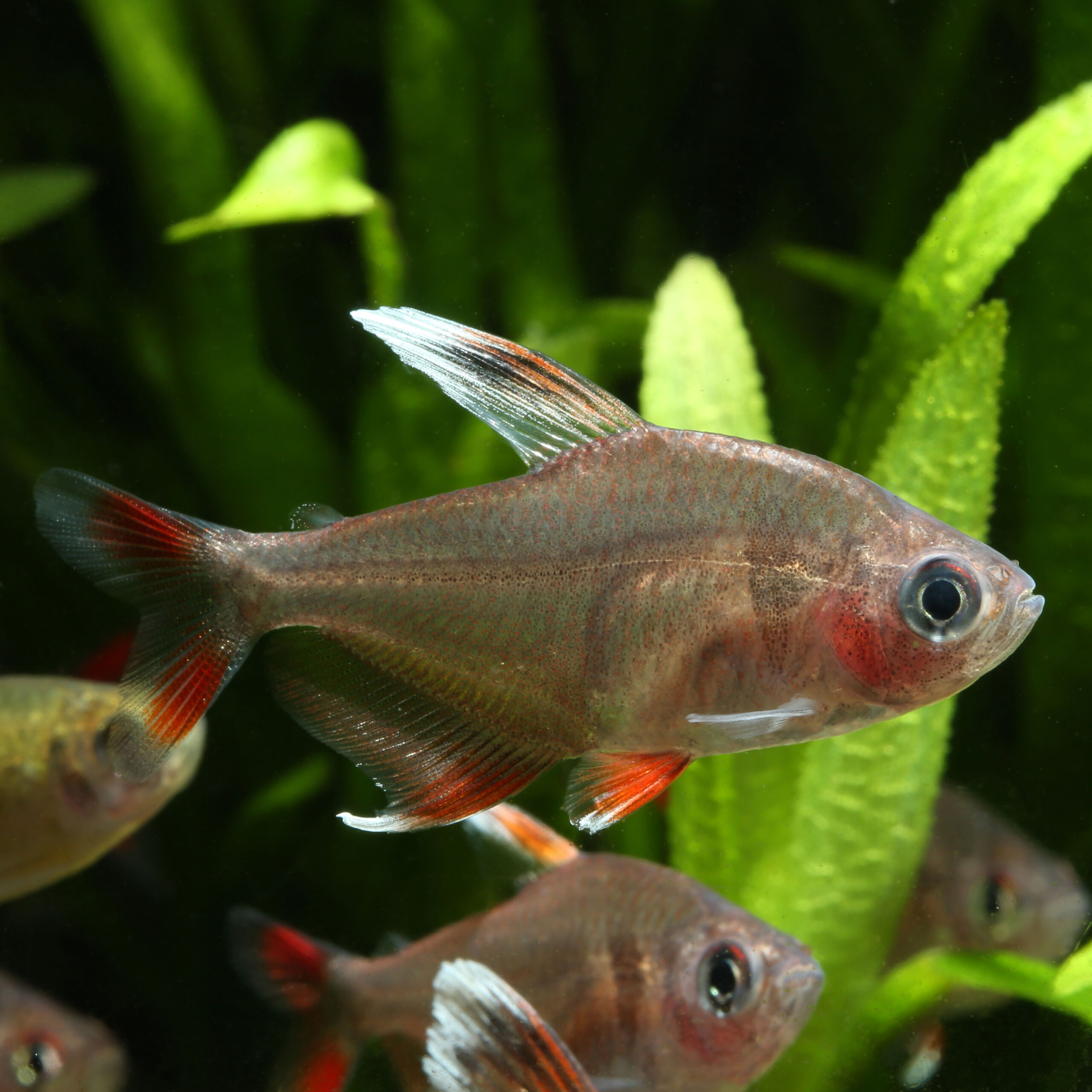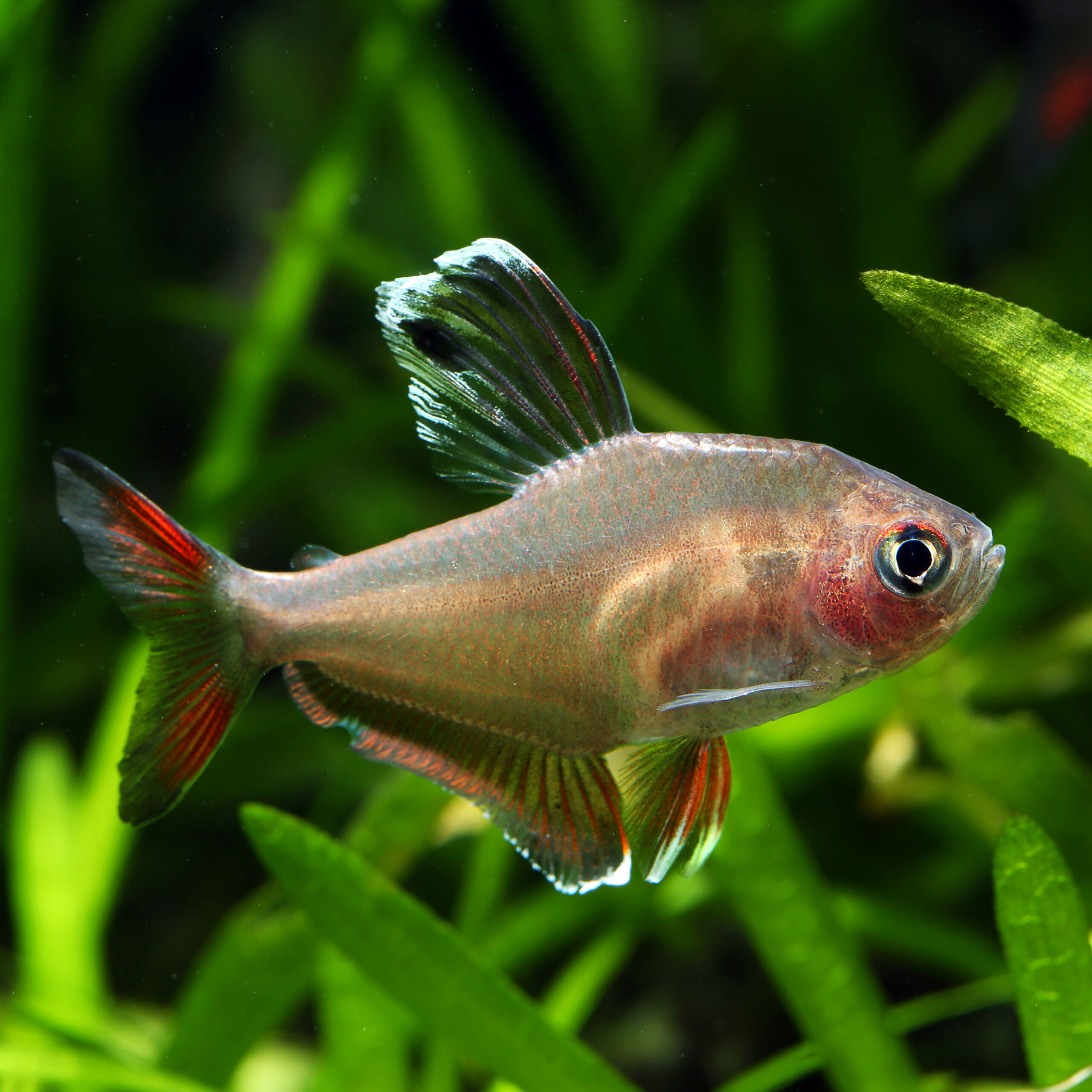White Fin Rosy Tetra
Hyphessobrycon rosaceus
The White Fin Rosy Tetra is a beautiful sight in the aquarium with its white colored and elongated fins.
- pretty breeding form of the Rosy Tetra
- bright white and red fins
- peaceful schooling fish
1 in stock
 Delivery in a few working days
Delivery in a few working days
 Free shipping from €60 across Austria
Free shipping from €60 across Austria





Important data
Product description & details
Hyphessobrycon rosaceus, also known as the Rosy Tetra, is originally from northeastern South America, where it can be found in small streams with clean, soft and acidic water. There it stays mainly in areas near the banks with dense vegetation so that it can hide in case of danger. The White Fin Rosy Tetra is a popular, very beautiful breeding form of the classic Rosy Tetra, which is characterized by a high proportion of white in the dorsal fin.
Care in the aquarium
The Rosy Tetra needs a tank with an edge length of at least 60 cm or a capacity of 54 liters and ideally dim lighting. A dense edge planting, which, however, leaves enough free swimming space, offers the tetra a feeling of security and opportunities to retreat. The tetra is a schooling fish that should be kept together with at least 10 members of its species. This extremely peaceful fish can also be socialized with other peaceful fish. Hyphessobrycon rosaceus is not too difficult to keep. The water should be soft to medium hard and the pH value should be between 6.0 and 7.5. It is important that the water is clean, which is why regular water changes are essential.
Feeding
In nature, the Rosy Tetra feeds on small crustaceans, worms and plant material. In the aquarium, feeding this predominantly carnivorous (meat-eating) fish is not very complicated: small live and frozen food as well as fine flake and granular food are readily accepted.
Sexual characteristics and breeding
The males differ from the females in their more intense body and fin coloring as well as a greatly elongated dorsal and anal fin. The breeding of the Rosy Tetra is successful in the aquarium with soft, rather acidic and, above all, low-nitrate water. The optimal breeding values are a hardness below 6°dGH and a temperature around 24-26°C. Tetras are free-spawners, which means that up to 100 eggs are freely released and fertilized between preferably fine-feathered plants or mosses. Since this species is a spawning predator and does not stop at its own offspring, there should be a separate breeding tank from which the parents are removed immediately after spawning. The first feeding of the young fish, which hatch after about 24 hours, takes place after about 5-6 days (after the yolk sac has been consumed) with the smallest food such as dust food or infusoria.






